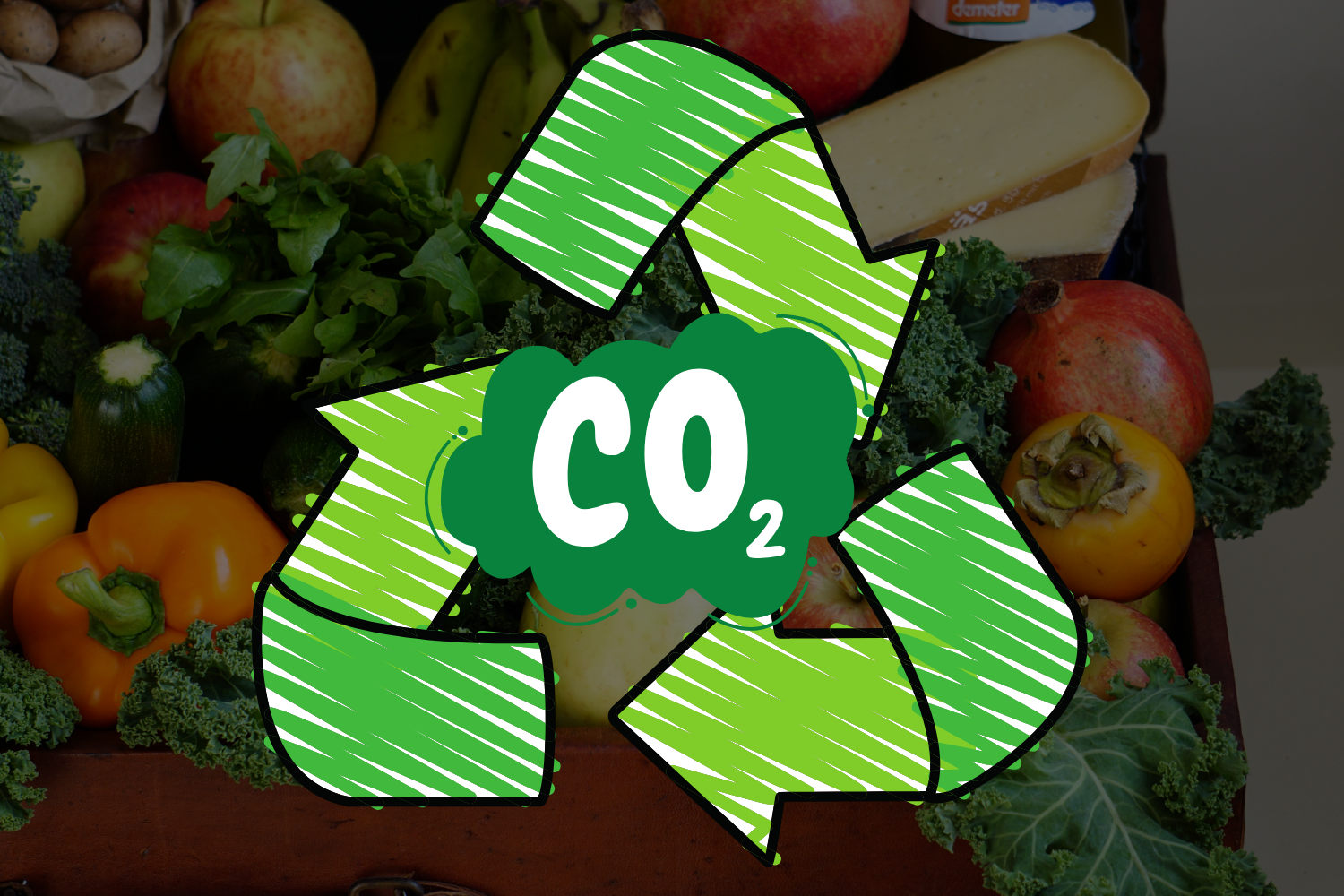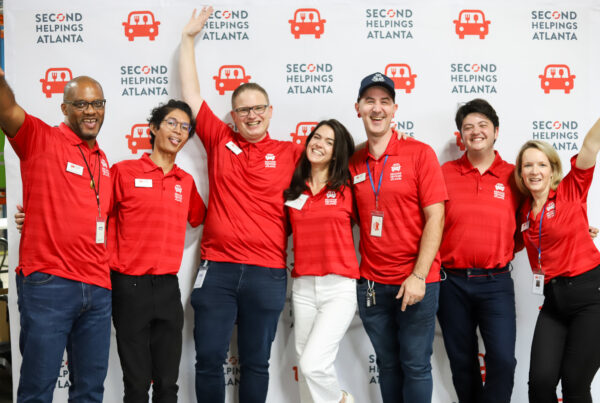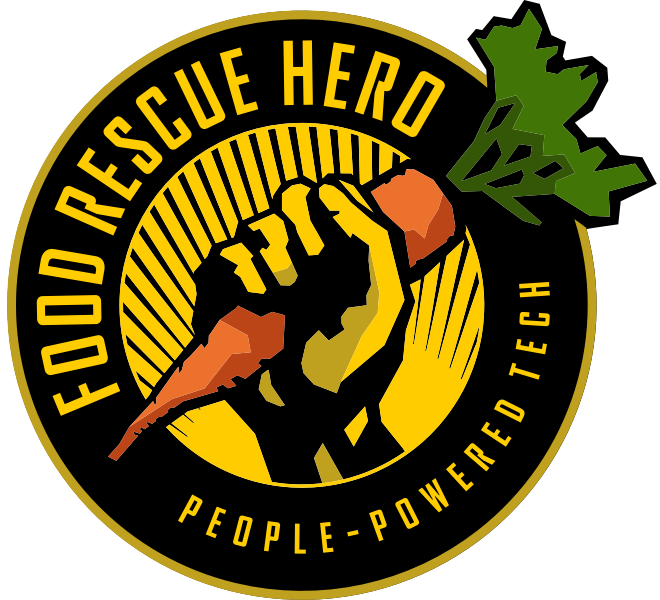In February 2025, Food Rescue Hero announced an innovative partnership with Brightly, marking a major step forward in the intersection of food rescue and carbon credits.
When presented with the opportunity some of our staff and board had questions. What does this all mean? Are carbon credits actually reducing our impact by letting corporate actors use our good work to excuse their bad behavior? We dug into it and this is what we found:
Carbon Credits Are Already a Key Strategy for Corporate Climate Action
Businesses across industries are recognizing their responsibility to reduce emissions and are implementing a range of strategies, from minimizing direct operational impacts to addressing emissions throughout their supply chains. As part of their carbon reduction strategy, major corporations around the world are using carbon credits as just one way to effectively reach their annual goals.
While many companies are working to implement long-term sustainability measures, such as using renewable energy, investing in sustainable materials, and reducing emissions, these efforts take time. Some industries, like heavy manufacturing and global logistics, face unique challenges in addressing emissions across their entire supply chain.
This is where carbon credits can help be a part of a larger mitigation strategy. By purchasing carbon credits, companies can take immediate, measurable action to offset their emissions while continuing to refine their long-term sustainability strategies. These credits enable organizations to financially support projects that directly reduce carbon in the atmosphere, ensuring faster deployment of impactful climate solutions.
Carbon Credits Fund Carbon Reduction Efforts – Quickly and Effectively
One of the biggest advantages of carbon credits is their ability to channel funding toward organizations that are already making a measurable impact in reducing carbon emissions. These credits act as a financial mechanism to accelerate scaleable, effective solutions like food recovery.
Rather than relying solely on corporate-led initiatives, carbon credits allow businesses to invest in expert organizations already engaged in high-impact carbon reduction efforts. This not only speeds up progress but also ensures that capital is directed toward proven, results-driven initiatives.
In short, the businesses that are taking advantage of these carbon credits are the ones leading their fields in reducing their carbon footprint and creating sustainable operating plans. It’s a great way to marry the efforts of the food recovery industry with the sustainability efforts of responsible corporate actors.
Food Rescue Carbon Credits Create More Than Just Environmental Benefits
When companies purchase carbon credits from food rescue organizations, the benefits go beyond carbon reduction. Food waste is a major contributor to climate change, and food rescue initiatives help mitigate this impact while simultaneously addressing food insecurity, social equity, and community health.
The global carbon credit market is projected to reach $669 billion in 2024. Currently, the majority of carbon credits originate from forest preservation projects in developing countries across Asia, Latin America, and Africa. While these initiatives are critical, there is also a strong case for diversifying carbon credit portfolios to include food rescue projects, especially in the communities where companies operate.
Supporting food rescue through carbon credits allows companies to make a direct, measurable impact on the environment and society. These projects don’t just prevent emissions from food waste – they also redistribute food to those in need, strengthening local communities in the process.
Carbon Credits vs. Traditional Donations: What’s the Difference?
Food rescue organizations, like 412 Food Rescue, rely on a mix of funding sources, including grants, foundation support, and corporate and individual donations. These contributions are essential for supporting ongoing programs, infrastructure, and community outreach. Donations and grants often have specific earmarks, rigorous reporting requirements, and limitations on usage.
Carbon credits function differently. Unlike traditional donations, which fund future work, carbon credits are generated based on verified, completed actions – such as incrementality of pounds of food rescued and emissions prevented. These credits are “minted” based on measurable impact, using a clear methodology that links each credit to a specific amount of food rescued and carbon offset. This makes them an appealing option for companies with structured carbon reduction programs, as they provide a more quantifiable and reportable way to integrate food rescue into their sustainability efforts.
Ideally, companies will support food rescue organizations in multiple ways: financial donations, food waste contributions, in-kind support, and volunteer efforts to name a few. But for businesses that may not have surplus food to donate or have restrictions on traditional philanthropic giving, purchasing carbon credits offers an alternative way to support food rescue while simultaneously meeting sustainability goals. This model broadens the network of companies that can contribute to reducing food waste and its climate impact.
A Win-Win for Companies and Communities
Food rescue carbon credits provide a new, scalable way for corporations to support sustainability, combat climate change, and strengthen local communities, all while fulfilling their own carbon reduction commitments. By incorporating food rescue into their carbon credit portfolios, businesses can amplify their impact beyond environmental benefits, driving social equity and food security in the regions they serve.
As the demand for transparent, high-quality carbon offsets grows, food rescue organizations stand as a valuable partner in achieving measurable climate and social progress. The opportunity is clear: companies can take meaningful action today by integrating food rescue carbon credits into their broader sustainability strategy creating a future with less food waste, fewer emissions, and stronger communities.
In February 2025, Food Rescue Hero announced an innovative partnership with Brightly, marking a major step forward in the intersection of food rescue and carbon credits. This opportunity was made possible by the establishment of new standards for carbon credit creation in 2023 from Verra, a widely recognized leader in carbon offset standards, who introduced the first-ever Methodology for Reducing Food Loss and Waste under the Verified Carbon Standard. This provides a structured approach for food rescue organizations to generate carbon credits.
Food Rescue Hero is uniquely positioned to help food rescue organizations meet these new, stringent requirements with its standardized platform and rigorous data collection. By enabling real-time tracking and verification, the platform ensures that rescued food can be accurately accounted for in carbon credit calculations, making the process seamless for participating organizations.
As the creator of the Food Rescue Hero platform, 412 Food Rescue has signed on as an early adopter, working closely with Brightly to establish the necessary processes and data collection systems. This commitment to innovation ensures that food rescue organizations using the platform can efficiently participate in the carbon credit market—creating new revenue streams while amplifying their environmental and social impact.

Want to grow impact in your community?
Our model merges technology, civic engagement, and public-private partnerships to introduce a new transport and distribution model that transforms surplus food into a resource and changes the way we approach food access.
And we are seeing sustainable, scalable and measurable impact.






